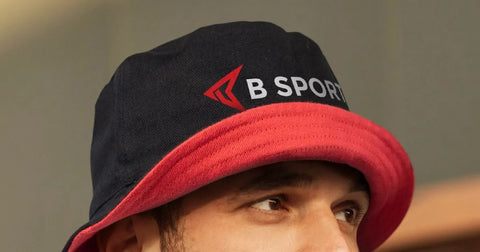Blog / Sales & Marketing / Low Budget, High Impact : The Magic Behind Guerrilla Marketing
Low Budget, High Impact : The Magic Behind Guerrilla Marketing

In today’s crowded marketplace, capturing attention can be a daunting task. Traditional advertising methods, while still effective, often fail to cut through the noise created by endless content and competing messages. This is where guerrilla marketing comes into play—a creative, unconventional approach that prioritizes engagement and creativity over the hefty budgets typical of traditional advertising campaigns.
What is Guerrilla Marketing?
Guerrilla marketing is a term coined by Jay Conrad Levinson in his book Guerrilla Marketing, published in 1984. It refers to innovative and unconventional marketing strategies designed to promote a product or brand in a unique way, typically on a low budget. Unlike traditional marketing, which often relies on repetitive ads across multiple channels such as television, radio, and print, guerrilla marketing seeks to create memorable experiences that resonate deeply with consumers. The essence of guerrilla marketing lies in its ability to surprise, engage, and inspire action.
Key Characteristics of Guerrilla Marketing
- Unconventional Tactics: At its core, guerrilla marketing relies on surprising and imaginative methods to reach audiences. Whether it’s street art, flash mobs, or pop-up events, these tactics aim to disrupt the mundane and capture attention in unexpected ways. This can include anything from creative installations in public spaces to viral online campaigns that encourage participation.
- Focus on Engagement: The primary goal of guerrilla marketing is not just to promote but to engage. By creating immersive experiences, brands can forge a stronger emotional connection with their audience. This engagement often translates into brand loyalty, as consumers feel a deeper association with brands that surprise and delight them.
- Word-of-Mouth Potential: Guerrilla marketing campaigns often generate significant word-of-mouth buzz. A well-executed campaign can encourage consumers to share their experiences, amplifying the brand's message without additional costs. The viral nature of these campaigns can lead to organic growth, as satisfied customers become brand advocates.
Successful Guerrilla Marketing Examples
- Coca-Cola’s “Share a Coke” Campaign: One of the most iconic examples of guerrilla marketing, Coca-Cola’s “Share a Coke” campaign personalized its bottles with popular names, encouraging customers to find their names or those of friends. This simple yet powerful idea led to a massive social media phenomenon, as people shared photos of their personalized bottles online. The campaign not only increased sales but also fostered a sense of community among consumers, making them feel personally connected to the brand.
- IKEA’s “Big Sleep” Campaign: IKEA took guerrilla marketing to new heights by setting up a temporary bedroom in a public space, inviting people to take naps and experience the comfort of their products firsthand. This unexpected approach created a memorable interaction, making the brand synonymous with relaxation. By engaging consumers in a direct experience, IKEA was able to showcase the quality of its products in a way that traditional ads could not.
- Red Bull Stratos Jump: In 2012, Red Bull sponsored Felix Baumgartner’s jump from the stratosphere. This high-stakes stunt showcased the brand’s adventurous spirit and generated massive media coverage, solidifying Red Bull’s image as a leader in extreme sports. The campaign was not only a marketing success but also a moment of global fascination, demonstrating how guerrilla marketing can transcend traditional boundaries and create a lasting impact.
- The Blair Witch Project: Although not a traditional product, the marketing strategy behind The Blair Witch Project is a classic example of guerrilla marketing. The film’s creators used the internet to create a viral marketing campaign that made audiences believe the events depicted in the film were real. By blurring the lines between fiction and reality, they built anticipation and intrigue that led to massive box office success on a shoestring budget.
How to Implement Guerrilla Marketing
- Understand Your Audience: Before launching a guerrilla marketing campaign, it’s essential to understand what resonates with your target demographic. Conduct thorough research to identify their interests, values, and behaviors. The more you understand your audience, the more effectively you can tailor your campaign to engage them.
- Be Creative: Creativity is the cornerstone of guerrilla marketing. Think outside the box and consider how local culture, current events, or trends can influence your campaign. Brainstorm ideas that not only capture attention but also reflect your brand’s identity. Collaborating with local artists or influencers can also enhance creativity and reach.
- Leverage Social Media: Utilize social media platforms to amplify your message. Encourage users to share their experiences and engage with your campaign. Creating a unique hashtag can help consolidate conversations and make it easier for users to find and participate in your campaign.
- Monitor and Measure: Tracking engagement and measuring the effectiveness of your campaign is crucial. Use analytics tools to assess social media engagement, website traffic, and conversion rates. This data can help you refine your strategies for future campaigns, ensuring continuous improvement.
- Create Shareable Content: Focus on creating content that encourages sharing. This can include videos, images, or interactive experiences that resonate with your audience. The more shareable your content, the greater the potential reach of your campaign.
Challenges of Guerrilla Marketing
While guerrilla marketing can yield impressive results, it also comes with challenges. Campaigns may face backlash if perceived as controversial or inappropriate. For example, if a campaign inadvertently offends a community or fails to respect cultural sensitivities, it can lead to negative publicity. Additionally, measuring ROI can be tricky, as the impact of guerrilla marketing is often indirect and harder to quantify compared to traditional advertising methods.
Legal and ethical considerations must also be taken into account to avoid potential pitfalls. It’s essential to ensure that your campaign complies with local regulations and respects public spaces. Collaborating with legal experts can help navigate these complexities.
Conclusion
Guerrilla marketing offers a unique opportunity for brands to stand out in a crowded marketplace. By embracing creativity and unconventional tactics, marketers can forge strong connections with their audience. As we move into an era where consumers seek authenticity and memorable experiences, guerrilla marketing remains a powerful tool for brands willing to think outside the box.
By focusing on engagement, leveraging the power of social media, and embracing the unexpected, businesses can create impactful marketing campaigns that resonate with their target audience. In a world where traditional advertising often feels stale, guerrilla marketing provides a refreshing alternative, proving that sometimes the most memorable campaigns are born from creativity and a willingness to take risks.







